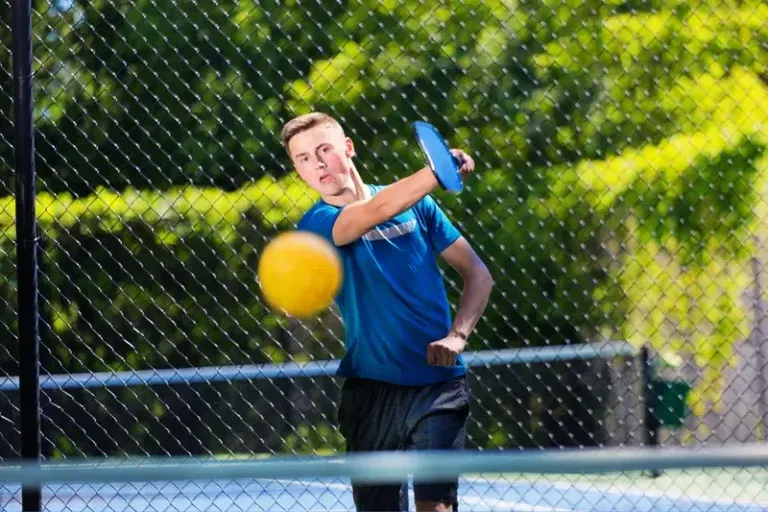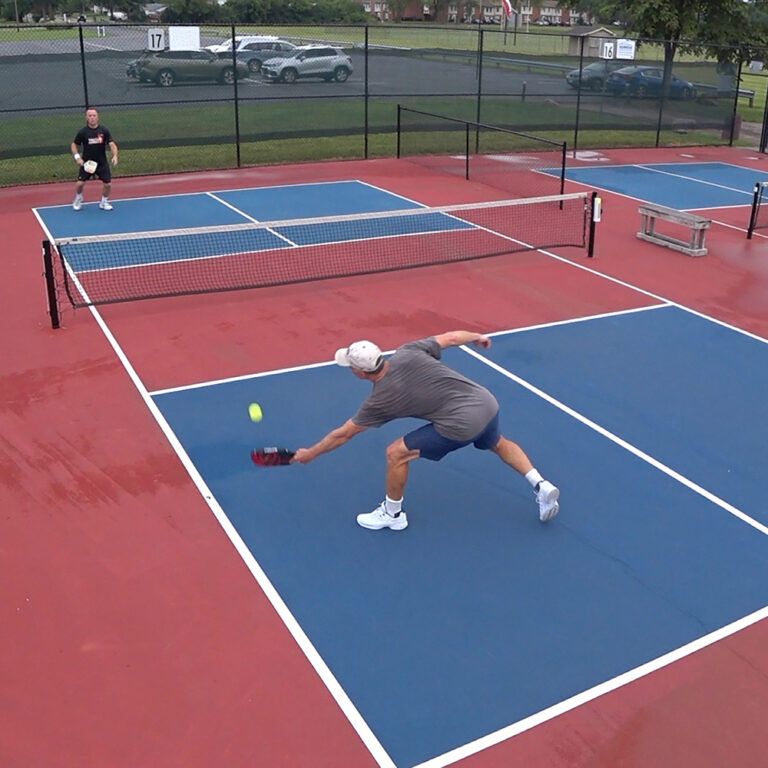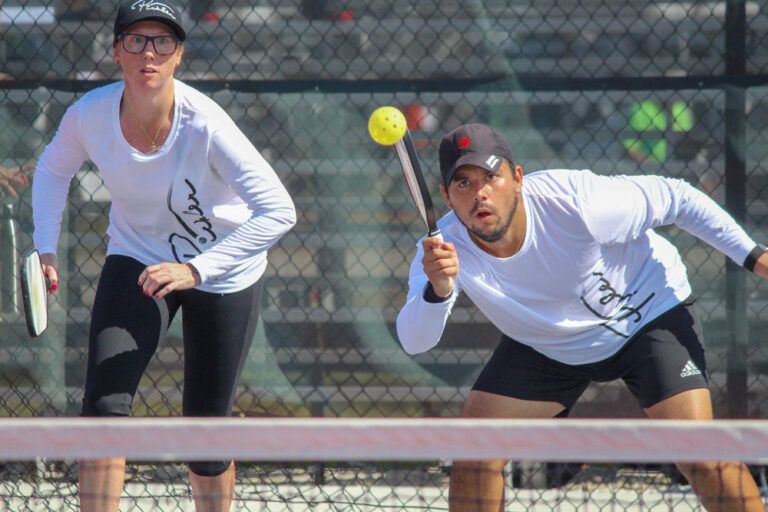Pickleball singles strategies - Mastering the serve and return
The serve and return are the bedrock of gameplay in singles pickleball. Mastering these essential elements is not merely about hitting the ball but doing so with intention and precision. When executed correctly, your serve can set the tone for the point, while a precise return can put your opponent on the defensive. As we explore these pivotal components, remember that they require thoughtful consideration and practice to perfect.
The power of a deep serve
Delivering a deep serve is akin to launching a powerful arrow towards your opponent's baseline. It not only puts pressure on them but also reduces their margin for error. A serve that pushes your opponent back forces them to adopt a defensive stance, limiting their response options. The effectiveness of your serve can be heighted by:
- Varying serve direction: Alternate between your deep serves to the forehand and backhand sides to keep your opponent guessing.
- Incorporating spin: Using topspin or slice can add complexity to your serve, making it difficult for your opponent to anticipate its bounce.
This strategic approach to serving lays the groundwork for a strong start to each point, establishing control right from the outset.

Strategic serving placement
While power is essential, serving with strategic placement amplifies your effectiveness. Aiming your serve from the center “T” of the court maximizes your coverage, presenting a challenge for the opponent to react. Key considerations include:
- Targeting weaknesses: Knowing your opponent’s weaker side (usually the backhand) and consistently directing your serves there can force errors.
- Challenging conventional wisdom: Occasionally serving away from the center can surprise your opponent and break their rhythm, creating scoring opportunities.
This nuanced approach underscores the importance of not only mastering serve depth but also being adaptable in your serving strategy.
Returning with purpose
The return of serve is not merely a defensive tactic; it is an opportunity to seize the initiative. A purposeful return positions you to dictate the pace and flow of the point. Focus on these elements:
- Aim for deep returns: Targeting deep into your opponent's court keeps them on their back foot and can provoke errors.
- Moving forward after the return: Advancing toward the kitchen line after your return allows you to capitalize on any mistakes made by your opponent, giving you control over the next shot.
Understanding the importance of each return creates a pathway for momentum in your favor, making each point strategically advantageous.
Singles court positioning and movement
Effective court positioning is the linchpin of success in singles pickleball. Being in the right place at the right time not only assures you an opportunity to return shots but also enables you to anticipate your opponent’s moves. Here, we explore the components of strategic positioning and movement tendencies.

The centerline as your anchor
Utilizing the centerline as your anchor is crucial for effective court coverage. This principle aligns with the fundamental notion of maintaining structure while allowing for fluid movement. As you play:
- Resetting to the center: After each shot, return to the centerline, which allows you to respond quickly to your opponent's choices.
- Anticipating opponent's movement: By mirroring your opponent’s movement, you can stay one step ahead, positioning yourself to intercept potential shots.
Through this strategic use of the centerline, you create a strong foundation that maximizes your chances of maintaining control throughout the match.
Shadowing the line: efficient court coverage
A deeper understanding of shadowing can refine your court coverage. Shadowing refers to your ability to move in alignment with the direction of the ball. The art of this technique is vital for optimal positioning. Consider the following:
- Adjusting based on shot direction: If the ball is hit crosscourt, position yourself to intercept a potential diagonal shot. Conversely, for down-the-line shots, align your movements accordingly.
- Importance of depth: Maintaining a prudent distance from the lines allows you to improve your angles of attack while reducing the risk of hitting the ball out of bounds.
Mastering the technique of shadowing effectively increases your readiness and tactical awareness, allowing for seamless movement across the court.
Getting to the kitchen line first
The kitchen line (non-volley zone) is where many games are won or lost. Establishing dominance here is essential, as it allows for effective counterplay and offensive tactics. Key strategies include:
- Using deep shots strategically: Hitting deep shots pushes your opponent back, giving you the opportunity to advance to the kitchen line unchallenged.
- Taking advantage of volleying options: At the kitchen line, you have several attacking options, such as volleys, dinks, and lobs, which can exploit your opponent's positioning.
By being proactive and aggressive at the kitchen line, you put yourself in a position to make decisive plays that can turn the tide of the match.
Shot selection and strategy
Effective shot selection is a blend of artistry and strategy that shapes the outcome of matches. Utilizing an array of shots serves to keep your opponent off balance, allowing you to seize control during critical moments. This section dives into the various shot types and strategic considerations that can elevate your game.

Mastering the passing shot
Passing shots serve as a counter-strategy for aggressive opponents pressing towards the net. The choice between different types of passing shots can create openings and exploit weaknesses. Here’s what to consider:
- Types of passing shots: Learn to differentiate between down-the-line shots, crosscourt shots, and angled returns. Each has its place depending on your and your opponent’s positioning.
- Utilizing strategic openings: Choose passing shots that target gaps in your opponent's defense, causing them to stretch or misplace their shots.
Mastering passing shots transforms your gameplay into a multifaceted approach that pressures your opponent both physically and mentally.
The art of the drop shot
Drop shots can be deceptively effective, disrupting an opponent's rhythm and forcing them into a hasty response. Here are ways to refine your drop shot execution:
- Placement and spin: Successful drop shots hinge on their placement; using spin can influence the bounce, making it harder for your opponent to respond effectively.
- Knowing when to use drop shots: Assess your opponent’s position. If they are deep in the court and vulnerable, a perfectly placed drop shot can yield quick points.
Utilizing the drop shot as a tactical weapon adds a layer of unpredictability to your game, enhancing your ability to control the flow of play.
The lob: a tactical weapon
The lob is often underestimated in singles pickleball, yet it can serve as an effective defensive maneuver or an aggressive play. Understanding when and how to use the lob can fortify your gameplay significantly:
- Defensive vs. offensive lobs: Use defensive lobs to reset the point, or opt for offensive lobs when your opponent is playing aggressively at the net. A well-timed lob can shift the momentum in your favor.
- Execution risks: While lobs can be powerful, be mindful of your timing; poorly-executed lobs can give your opponent an easy overhead opportunity.
A strategic approach to lobbing can enhance your repertoire, enabling you to adapt quickly to vary your attacks and defenses.
Advanced dinking strategies
Dinking can often shape the outcome of points, particularly at the kitchen line. By adopting advanced dinking strategies, you can apply pressure and force your opponent into making crucial errors. Consider incorporating these tactics:
- Aggressive dinking: Target your opponent’s feet or push the ball wide to create openings. Aggressive dinks disrupt an opponent's rhythm and can induce mistakes.
- Disguising your dinks: Utilizing variation in spin and speed can keep your adversary guessing and make it harder for them to predict your next move.
By mastering the art of dinking, you maintain an element of surprise that keeps your opponent on their toes, setting up scoring opportunities.
The mental game in singles
Beyond physical skill and technique, the mental aspect of pickleball singles is paramount. Developing mental resilience and strategic thinking enables players to perform at their best, even in high-pressure situations. Here's where we explore ways to bolster your mental game.
Maintaining focus and concentration
In the throes of a match, distractions can emerge from all corners. Maintaining steadfast focus is essential for optimal performance. Employ strategies such as:
- Mindfulness techniques: Practicing mindfulness helps center your thoughts and improves concentration during challenging rallies.
- Dealing with distractions: Establish methods to filter out external distractions, allowing you to maintain your composure during tense moments.
The ability to stay focused is what distinguishes consistent players from those who struggle under pressure, marking the difference between victory and defeat.
Developing a winning mindset
A positive mindset is critical in creating a pathway to success in pickleball. Building confidence and resilience allows players to overcome obstacles and bounce back from mistakes. Here are some effective strategies:
- Positive self-talk: Reinforce your thoughts with affirmations. Recognizing your strengths can help maintain confidence even when faced with difficult situations.
- Visualization techniques: Visualize your success on the court, picturing yourself executing plays effectively. This mental rehearsal prepares you for real-time performance.
Fostering a winning mindset equips you with the psychological tools to navigate challenges and perform at a consistently high level.
Strategic thinking and in-match adjustments
The dynamics of a match can shift dramatically, necessitating quick adaptations. Strategic thinking and the ability to read the game allows players to adjust their tactics as needed. This involves:
- Analyzing weaknesses and patterns: Observing your opponent’s movements and recognizing their tendencies can reveal vulnerabilities.
- Making tactical adjustments: Depending on how the match unfolds, be willing to shift your strategies to capitalize on newly identified strengths or weaknesses.
This level of adaptability is fundamental to elevating your singles game and enhancing performance throughout the match.
Training and fitness for singles success
Physical conditioning is the backbone of effective gameplay in singles pickleball. Focusing on endurance, strength, and agility not only enhances performance but is essential for enduring the demands of an intense match. Let’s dive into effective training strategies that bolster your fitness.
Enhancing endurance and stamina
Endurance is non-negotiable in singles pickleball. Your ability to sustain energy is what allows for peak performance throughout the match. Consider these training methods:
- Card cardiovascular training: Incorporate running, cycling, and interval training to develop stamina that matches the pace of the game.
- High-intensity interval training (HIIT): Implementing HIIT can boost your overall fitness level, helping you build the endurance necessary for singles play.
With concerted effort in developing athletic endurance, you’ll find that matches become more manageable and your performance significantly improves.
Singles-specific drills
Tailoring drills specifically for singles play can refine your skills and techniques under match-like conditions. Here are some foundational drills to include in your practice routine:
- Solo drills: Focus on footwork, shot consistency, and court coverage to enhance overall performance.
- Partner drills: Practicing with a partner allows you to simulate match pressure and improve your shot accuracy and effectiveness.
Engaging in singles-specific drills creates a structured training regimen that prepares you physically and mentally for live matches, facilitating growth in your game.
Strength and agility training
Incorporating strength and agility training into your fitness regimen is essential for enhancing your reaction time and power on the court. Consider these aspects:
- Core strength exercises: Strengthening your core enhances stability and control during gameplay, allowing for more effective movement and shot execution.
- Agility drills: Participate in ladder drills, cone drills, and shuttle runs to develop quick footwork and directional changes, which are crucial in singles play.
Incorporating strength and agility training reflects a comprehensive approach to fitness that directly impacts your pickleball performance.
Conclusion
In conclusion, deploying effective strategies in singles pickleball encompasses a plethora of skills ranging from serving and returning to nuanced shot selection and mental toughness. By mastering these core elements, you position yourself for success on the court. Remember that consistent practice and adaptation of these strategies to your own strengths will lead to continuous improvement. Embrace the journey of honing your skills, and watch as your performance elevates, allowing you to dominate the court.










